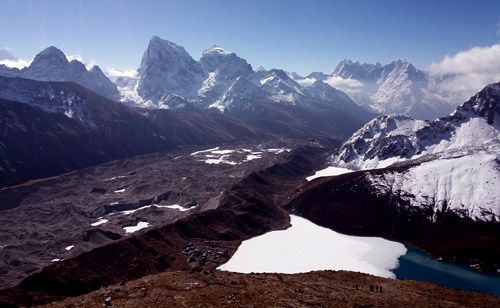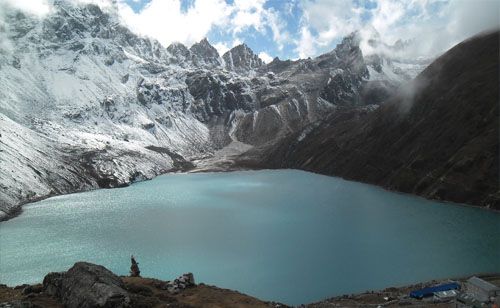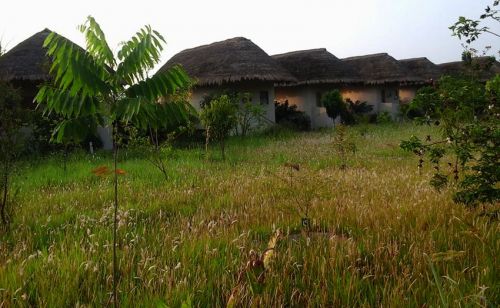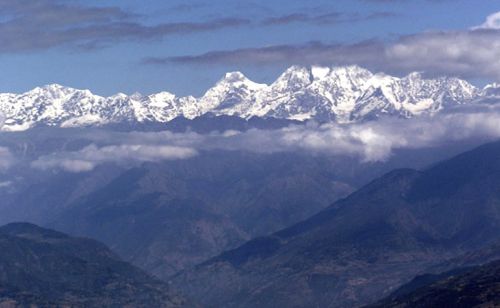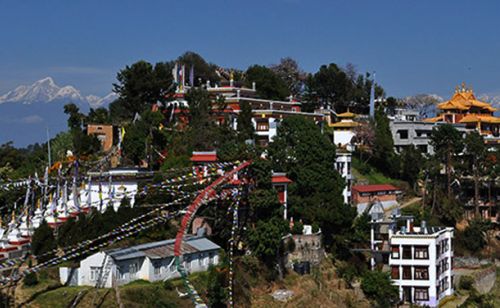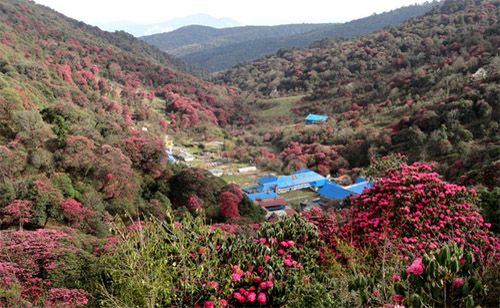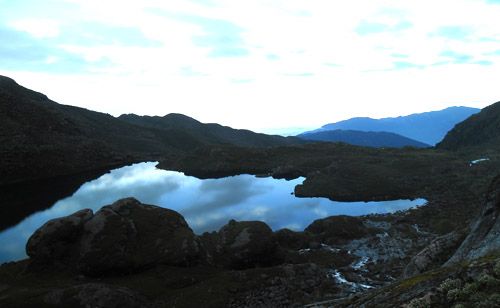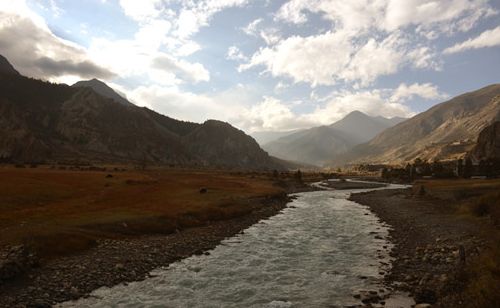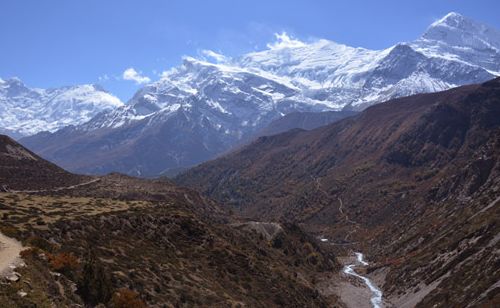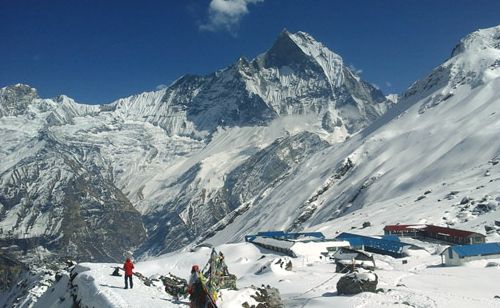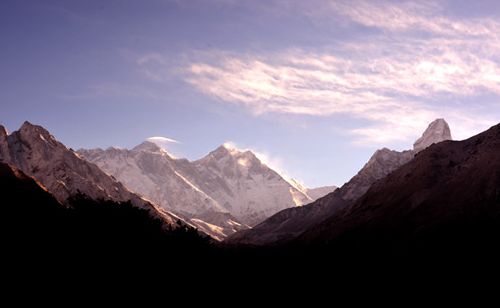Makalu Base Camp Trek- 18 Days
Trip Destination:Nepal
Total Duration:18 Days
Difficulty:Strenous
Trekking Days:13
Overnight :Camping/ Hotel
Max. Altitude :Makalu Base Camp- 4870 m.
Best Season :Mar - May & Sept - Nov.
Show AllGlimpse of this trip:
- Fascinating view of Mt. Makalu (8463 m), Mt. Kanchenjunga (8586 m) & Mt Everest Range
- Outstanding experiences of tropical forest
- Mt. Makalu Base Camp- 5000 m (5th highest peak in the world)
- Traditional Tibetan villages & their lifestyle
- Cross-section religion & culture
Makalu Base Camp trek is one of the most beautiful & less touristic trek in Nepal. It’s best trekking trail among the trekkers, who wants to be enjoyed under the influence of natural extraordinary beauty, and that trekking trail takes you to the place, where the world’s fifth highest mountain is located. This trail also leads you through unique regions, where you can interact face-to-face with the people, who follow the long established traditions. Their ancestors have left far behind by embracing modern technology and modern thoughts, but where in the perfect relation between the plants and animals exist in a harmony that the whole world wants to see once more along with you. During our trip we travel within Makalu Barun National Park. Mt. Makalu (8463 m) is the fifth highest peak in the world. It is a quite adventure with scenic beauty of nature. Moreover we can have nice view of Kanchenjunga massif, Everest, Lhotse, Baruntse, Chamlang and others.
This trek begins flight from Kathmandu to Tumlingtar. If you want to travel by bus from Kathmandu to Tumlingtar it’s also available but it takes longer time. The destination of this trek is Makalu Base Camp (5000 m) which is highest elevation of this trip.
There is less number of hotel & guesthouses available in this trek till now but if you want homestay service is available. So that for the accommodation we manage camping trek with full experience & trained staff.
Detail Itinerary
Day 01Arrive in Kathmandu (1335 m), transfer to hotel. Overnight at hotel.
Day 02Sightseeing (Bouddhanath, Pashupatinath & Swyambhunath) along with trek preparation.
Day 03Fly Kathmandu to Tumlingtar (400 m) & drive to Num (1505 m), about 4hrs drive. Overnight at camping.
Day 04Trek from Num to Seduwa (1530 m), about 5hrs trek. Overnight at camping.
Day 05Trek from Seduwa to Tashigaon (2065 m), about 5hrs trek. Overnight at camping.
Day 06Trek from Tashigaon to Khongma (3562 m), about 6hrs trek. Overnight at camping.
Day 07Acclimatization day at Khongma Danda (3800 m).
Day 08Trek from Khongma Danda to Mumbuk (3550 m), about 7hrs trek. Overnight at camping.
Day 09Trek from Mumbuk to Yangri Kharka (3610 m), about 6hrs trek.
Day 10Trek from Yangri Kharka to Shershong (4650 m), about 5hrs trek. Overnight at camping.
Day 11Trek from Shershong to Base Camp (4870 m), about 5hrs trek. Overnight at camping.
Day 12Explore around Makalu Base Camp.
Day 13Trek from MBC back to Langmale Kharka (4410 m), about 6hrs trek. Overnight at camping.
Day 14Trek from Langmale Kharka back to Mumbuk (3550 m), about 6hrs trek. Overnight at camping.
Day 15Trek from Mumbuk to Tashigaon (2065 m), about 8hrs trek. Overnight at camping.
Day 16Trek from Tashi Gaon to Num (1505 m), about 6hrs trek. Overnight at camping.
Day 17Drive from Num to Tumlingtar, about 4hrs drive. Overnight at hotel.
Day 18Fly back to Kathmandu from Tumlingtar (400 m). Overnight at hotel
Cost Include
- All additional government tax.
- All necessary trekking permits.
- Airport picks and drops by private vehicle.
- 3 nights hotel in Kathmandu with B&B base.
- Accommodation in tent during trekking.
- Domestic airfare to/ from Kathmandu-Tumlingtar, including airport tax.
- Good meal prepared by trained & experienced cook (breakfast, lunch and dinner) with tea, coffee, hot chocolate, etc. during the trek.
- Accommodation, salary, travels insurance, transportation of Nepali trekking staff.
- An experienced government licensed trekking guide and porter (1 porter for 2 trekkers).
- All camping equipment tent (one for two person)
- Hot water in the morning
- All land transportation from/ to Tumlingtar-Num by reserved bus/ Jeep.
Cost Exclude
- International air fare.
- Lunch and dinner in Kathmandu.
- Your travel insurance (Compulsory).
- Tips to guide and porter and all kind of Drinks.
- Nepal entry visa fee (U$ 40 for 30 days from date of issue).
- Bar bills, telephone bills and other personal expenses (shopping, laundry & shower).
- All expenses due to sudden events e.g. flight cancellation, personal illness, strike etc.
Approximately Individual Expenditure on the Spot
- Lunch or dinner in Kathmandu (08 - 15 US$) per item
Note: The others expenses are depend on you (shopping, hard drinks, etc.) and situation (flight cancellation, rescue, etc.). If you depart earlier than itinerary program your payment will not be refunded and early arrival expenditure also will not be covered by your trip cost.
Trip Info
Accommodation: We provide wide range of accommodation services for our clients as per there request from star hotel to normal guesthouse in main city areas where available, while the price of the trip might alter on that basis. On this trekking trail there is no hotel/ guesthouse so we provide you good accommodation in the tent with full equipment.
Food/ Meals: Cities areas in Nepal offer excellent and variety of food and cuisines as it has many hotels and restaurants. National/ international food, local food, fast food, dessert items, snacks etc. are easily available in cities areas like; Kathmandu, Pokhara, Lumbin,... While in case of remote areas one can enjoy food prepared by trained and experienced cook. We manage all those things so you should not pay extra charge for that facilities. We provide you all the kitchen equipment and staff.
Drinking Water: We highly advise to minimize use of plastic during the trek. Please always remember that there is no any plastic recycle facilities up in the Mountains. In this regard we highly recommend you to use boiled water for drinking or use water purification tablets instead of buying water in plastic bottles. Your guide will suggest you the best and most ecological friendly way for drinking water during your trek depending on trekking trail. We advise to have your own water bottle with you for the whole trek which you can refill whenever you need.
Acclimatization: It is very important for the trekking above 2500 m. Our trekking schedules have been carefully designed to maximize your ability to acclimatize safely. We ascend slowly and ensure an adequate number of rest days. However, it is still possible for mountain sickness and your guide will be watching for symptoms with an experienced eye throughout the trip. These symptoms are commonly headache, nausea, vomiting, tiredness, and feeling difficult to breathing. If you or any of the group members display any of these symptoms he will be able to provide informed advice and ensure a proper action. Your guide will advise you more thoroughly regarding the altitude and most of the problems starting on trial.
Best Season: As what one can see highly depend upon the seasonal condition, it is always best to travel on the best season for the corresponding trek. It is not that on season other than the best one, the trek gets worse, but one can fully take advantage of the trek when done in best season. The best season for trek in Nepal is Mar-May (spring) and Sep-Nov (autumn); though trek can be do throughout the year.
Expert Team: Working your way through dangerous mountainous route can be very challenging and adventure. One can encounter less stamina, high altitude, weather condition, steeply and slippery path way while travelling depending upon the route one choose. So leading the trip despite of all the challenges requires experienced and expert team who are directly under you care. They are properly trained and government certified individual who are very capable and knowledgeable to work out through extreme condition and lead you safely. All of our staff is provided with insurance, medical services and equipment as their safety is something we do not take lightly.
Packing Ideas: We advise that carrying appropriate and proper equipment is better than carrying excessive quantity of equipment. So one should only carry appropriate and only absolute necessary equipment with self; warm clothes, trouser, t-shirts, hiking boots, sunglasses, sun cream, knife, walking stick, backpack, headlight, sleeping bags are among the essential stuff one requires. Equipment we provide are limited so, one should manage required equipment by self or it can be bought in any appropriate places.
Safety and Security: Safety and security of traveller and team staff is matter of great concern to us. Selection of proper route, highly trained professional team and equipment required is done with great care and knowledge. We have proper remedial services during the trek with professional staffs; first aid kit, oxygen bag and helicopter service for emergency rescue whenever trekkers get physical loss or altitude sickness.
Experience and Fitness: Though high level of fitness and previous experience is not needed for trekking in this reason but food stamina, workout and running and walking habit helps to higher extent. Walking through rocky steeply path way can be challenging but with appropriate rest and walking habit, one can complete their journey with no regret left behind.
Equipment List
| Trekking Equipments List
Trekking is simply walking in the hills or the mountains, be it for a day or weeks or more. Certain basic trekking equipment is essential while you're trekking to any parts of the trekking destinations in Nepal. The items may differ from the area to area and on season to season. The following are the list of the equipment that we suggest you for your trekking in Nepal Himalaya. Clothing:
Equipment's and Accessories:
Medical:
Details of Trekking Equipment's:
|
Trip Note
The itinerary given above is just for guidance not the strict rule so it’s possible to customize according to your need.
Enquiry
Useful Info
related Trips
YOU MAY LIKE THIS
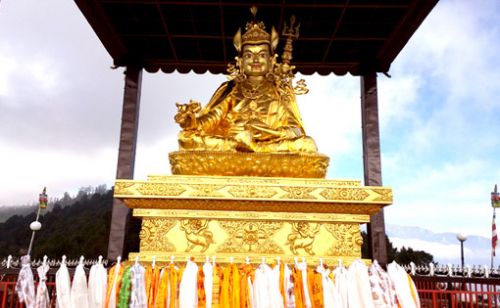
Helambu Trek- 8 Days
8 Days
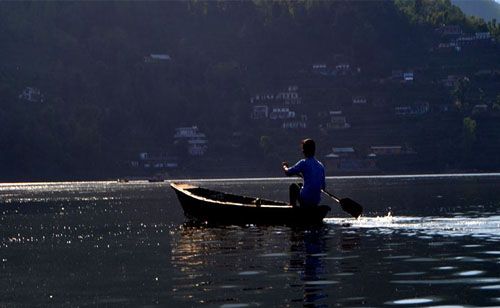
Pokhara Tour
05 Days
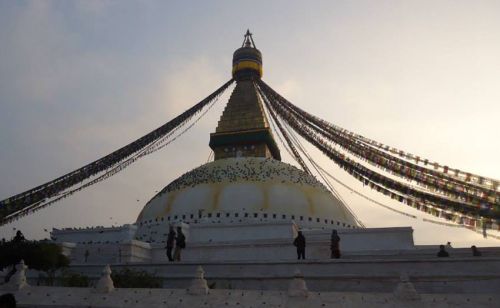
Kathmandu Valley Tour
04 Days
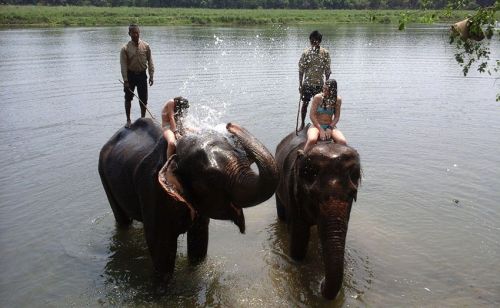
Kathmandu Chitwan Tour
05 Days
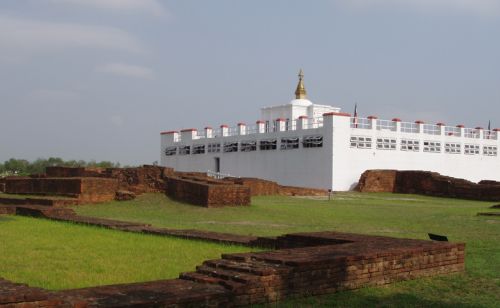
Kathmandu Lumbini Tour
07 Days
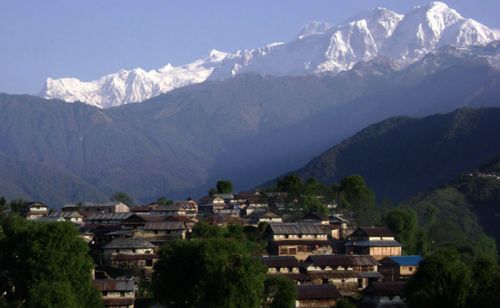
Ghale Gaun Trek
10 Days
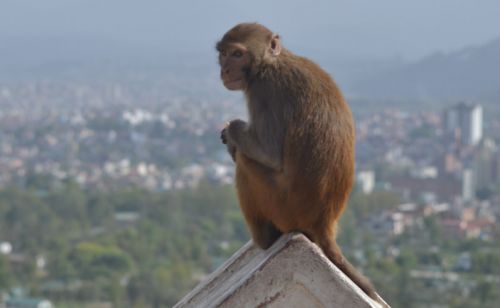
Around the Kathmandu valley Trek
06 Days
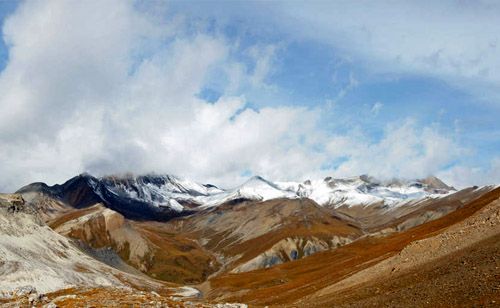
Upper Dolpo Trek
28 Days
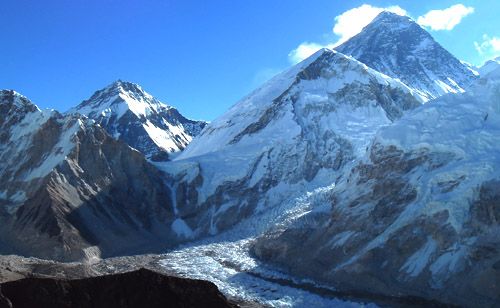
Everest Base Camp Trek- 11 Days
11 Days
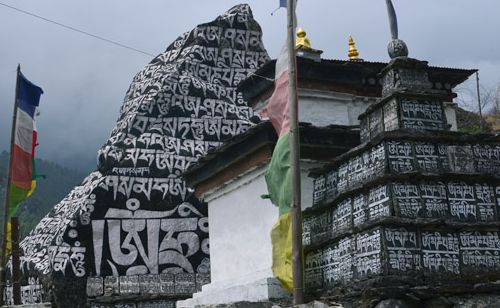
Sherpa Culture Trek- 15 Days
15 Days
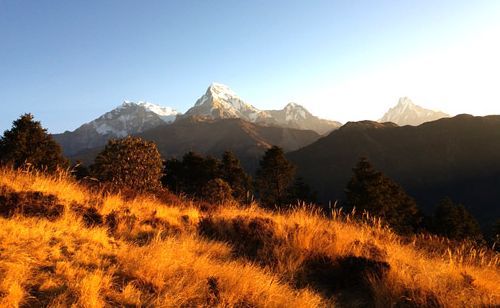
Poon Hill Trek- 6 Days
6 Days

